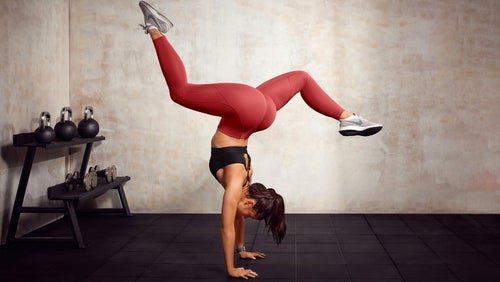What Is Hypertrophy Training?

Muscular hypertrophy, or building muscle, is one of the most common goals of those who weight train. While most weight training programs will lead to muscle growth, advice on how to maximise hypertrophy is often conflicting. In this article, we’ll take you through the different types of resistance training and the key principles for maximising hypertrophy.
Hypertrophy Training
Any form of resistance training will improve your strength and size, but there are some useful things to know if increasing muscle mass is your main goal.
For hypertrophy, we need to increase “time under tension” (the amount of time the muscle spends under strain during a set) so your rep range will be higher than strength training. You’re looking for anywhere between 6-12 repetitions over 4-5 sets.
When considering weight, a good way of managing what you lift is by setting a rep window (10-12 reps). If you can lift more than 12 comfortably, the weight is too light. If you can’t hit 10, it’s too heavy. Alternatively, you can use a percentage of your one-rep max (1RM), the maximum weight you can lift for a single rep. Eg 10-12 reps of 65% of your 1RM.
If you want to increase muscle mass, first there are two important things to consider:
Calories:
Calculate a calorie surplus that’s manageable and sustainable. Work at around 250 calories in the plus. Increase this if you plateau.
Progressive Overload:
To continuously improve, you need to match your muscular improvements and lift heavier weights over time. Track your training and add slightly more weight as you progress.

Progressive Overload | What is it?
Elevate your training plan with progressive overload.
Training Intensity
Training intensity is believed by some to be the most important contributor to hypertrophy. Intensity is the amount of weight lifted, generally defined as a percentage of one-rep max (1RM), the maximum amount of weight a person can lift for a single repetition.
Intensity and volume have an inverse relationship; the heavier you lift, the fewer reps you will be able to complete. Rep ranges fall into three categories: high (15+; endurance), moderate (6-12; hypertrophy) and low (1-6; strength).
High-load training completed within a moderate rep range (6-12) may best stimulate hypertrophy through a combination of mechanical tension and muscle damage.
Training Volume
This is the number of reps completed in a set or the total amount of work performed.
Rest periods
Rest periods can be divided into various lengths; HIIT training will use significantly shorter rest periods than strength and hypertrophy training. Rest periods in these latter two forms of training will usually be 1-2 minutes and sometimes longer.

Fit For HIIT | Introducing Power Ultra 2.0
Get to know the new collection that will elevate your gym sessions.
Rest periods of 60-90 seconds are believed to be better for hypertrophy. Longer rest periods are believed to be the best method if you want to increase strength. The time to recover between sets should allow you to complete more reps and with better technique. Completing more reps before you’re ready can also lead to an increased risk of injury.
While it’s good to have sufficient rest between sets, it’s believed muscle failure should occur for maximal hypertrophy. Muscular failure is the point when muscles are so fatigued they cannot complete any more reps.
It’s worth remembering that training to failure increases the risk of over-training and subsequent muscle loss, therefore it’s vital that training to muscular failure is done as part of a periodised training programme.
Exercise selection
A training plan that uses a combination of compound and single-joint movements is better for muscle growth than a training plan that focuses on one type of movement.
This may be because compound exercises use a greater number of muscles, resulting in an increased hypertrophic response.
However, single joint exercises provide a greater emphasis on individual muscles resulting in increased muscle growth in a specific area.
Key points
- Muscle growth is stimulated by mechanical tension, muscle damage and metabolic stress.
- Utilise a moderate rep range (6-12) over multiple sets
- Train using both compound and single joint exercises
- Rest between each set for 60-90 seconds
- Periodise training to avoid over-training
- Speak to a professional before beginning any new training program
Take home message
Hypertrophy is a common goal of many people who weight train, but much of the advice on training methods for optimal muscle growth is conflicting.
For all muscle growth, calorie surplus and progressive overload are essential. After this, training intensity, volume, rest periods and exercise selection will have most influence on hypertrophy.
Training to muscular failure is also believed to be a major contributor to hypertrophy. This increases the risk of over-training and subsequent muscle loss, so it’s vital this is done as part of a periodised training programme.








